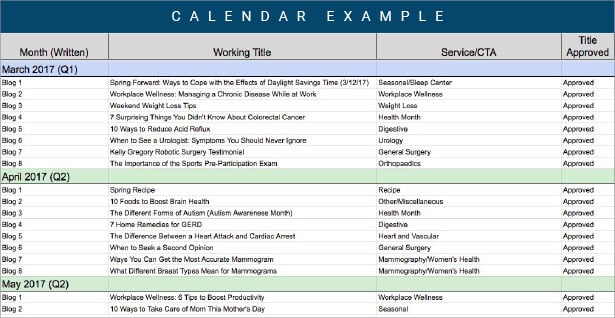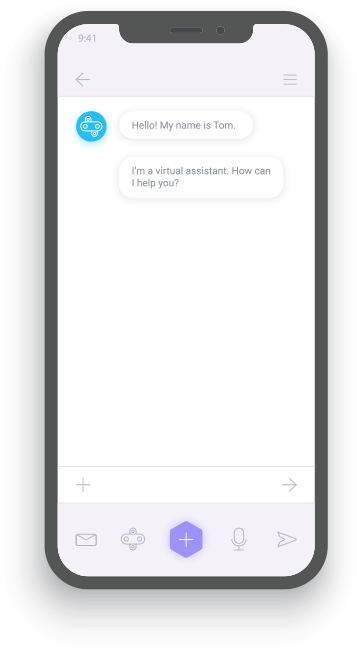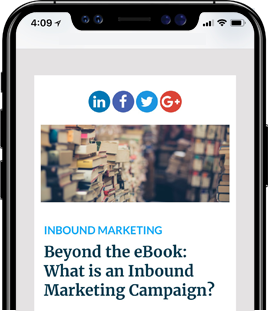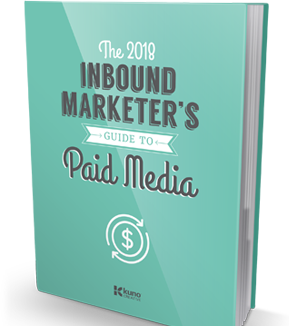
How to create a
Digital
Marketing Strategy
Now is the time to invest more in your marketing
The Basics
Align Your Business Goals
The most important aspect of any plan is that it ties back to the big picture: your business goals. This is truly where marketing starts. But before allocating time and effort to creating a plan, work with your executive team to identify what these business goals are and where marketing plays a role.
Marketing is often tasked with driving revenue (or at least leads) but is capable of so much more, including:
- Driving brand awareness
- Lowering the cost of customer acquisition
- Shortening the sales cycle
- Increasing customer satisfaction
While it’s ultimately your sales team who will close deals, marketing can help make it easier by improving brand recognition, providing educational resources and creating follow-up content.
Identify Key Performance Indicators (KPIs)
The next step is to nail down the KPIs you will measure. These are used to keep track of the progress you’re making toward your big-picture goals. Before you can identify your KPIs, take a look at your historical data. You can use Google Analytics or your CMS to review previous years’ numbers and see annual growth, seasonality and performance. You’ll want to use these numbers to create realistic goals going forward.
Here are some popular KPIs and how you can use the data to improve your marketing:
- Website visits/visitors - track visits by source to see how people are finding you and where they are coming from
- Leads - view popular conversion points to identify what’s driving people to convert
- Landing page conversion rate - check which landing pages have the highest conversion rates and which pages can be further optimized
- Marketing qualified leads (MQLs) - understand what demographics and behaviors make up your best prospective customers
- Sales qualified leads (SQLs) - identify the touchpoints your most qualified prospects have in common to see what might be driving them to contact you
- Social media engagement - if many of your contacts are finding you via social and engaging in your posts, it might be time to increase your social media budget
As increasing your marketing budget becomes more reliant on showing ROI, track some of the more important metrics for your CEO, too. Metrics like customer acquisition cost and customer lifetime value let your boss know how important your marketing efforts are to the bottom line
Following your audience through the funnel from visitor to lead to MQL, SQL and finally to Customer will help you identify opportunities for improvement in the user journey.
Use Personas to Guide Your Strategy
Before you dive into creating content, you must develop personas. These are used to guide your content strategy. What you write and how you promote it will vary depending on your audience and where they get their information. Creating personas helps you focus on what drives your customers—their fears, motivations and needs—which in turn will help you communicate more effectively with them.
If you already have personas, you should review them once a year for accuracy. But you may also want to update them if your business is shifting strategy, launching a new product or service or going through a buyout or merger in the near future.
If you don’t currently have them, be sure to create meaningful buyer personas to guide your content strategy going forward. This is an extremely important part of your plan, as it will influence just about everything you do for your marketing. Start by interviewing your internal stakeholders and current customers to gain insight on the pain points your product or service solves, who you’re targeting and your keyword focus.
Facebook can be a great place to pull data on your current customers.
HubSpot’s new Facebook integration will allow you to pull this data from within the HubSpot platform. Within the Ads add-on in HubSpot, you can choose “Create Audience” to use a current list or target Facebook visitors who’ve been on your website. Or you can go the traditional route and upload a list of emails into the Facebook database to pull demographic information from current contacts. This can be used as a starting point to create buyer personas.Setting Up for Success
Keyword Research
Finding the right keyword terms can seem overwhelming, but the best approach is to start with keywords you already rank for. Using tools like the HubSpot Keyword Dashboard or Google Keyword Planner, find out what your top keywords are and use those to generate other suggestions. You can also review your competitors’ keyword terms with tools like SEMrush and see if any of them make sense for your business to target. The sweet spot is keywords with high search volume and a low difficulty score. This may vary slightly depending on your business since more niche markets may not drive as much traffic.
Along with these keywords, your personas will provide you with information like pain points, challenges and goals. This will help you get into the mindset of your potential customers and recognize the types of terms they would search. As you build out your content, focus on the keywords most relevant to your audience to ensure your business is found by your most qualified visitors.

Creating Campaigns
Campaigns are essential for tracking the success of your marketing efforts, but there’s still some confusion around what a campaign actually entails.
The short answer is A campaign is a series of marketing tactics that align to achieve a predetermined goal.
Campaign Example:
You’re a manufacturer attending an upcoming trade show where representatives from your company will be showcasing your products. Your goal is to generate awareness for the event and get people to visit your booth (ultimately driving business to your site). You send out an email to your database letting them know you’ll be attending the trade show and will be doing a product demonstration. In the email, you share the trade show location, your booth number, demonstration time and contact information for a team member they can contact with questions or to set up a meeting. During the trade show, you have a computer out for visitors to fill out their information in exchange for a 20 percent off coupon. Once in your system, you send a follow-up email thanking them for visiting your booth at the trade show and prompting them to subscribe to your blog. From there, they will receive informational content about your products, services and industry. Those who are ready to buy may use the coupon, while those who are not will continue to be nurtured through various content you’ve created.
In the above example, each and every action ties back to the main goal of driving business to your site but not in a way that feels uncomfortable or annoying. With campaigns, you want to show that you understand your audience and create opportunities to connect with them. The more you engage with potential customers on their level and create positive experiences with your brand, the more likely they are to do business with you and encourage others to as well.
As far as content goes, creating a campaign starts with a focal point. All other marketing assets should tie back to this focal point, whether they be blogs, eBooks, guides, emails, landing pages or something else. And current HubSpot users can track the success of your campaigns in the platform with the new Campaign Analytics tool.
Creating a Content Calendar
Now that you have the foundation for your content marketing in place, how do you get started creating content? First things first, create a calendar.
Create a Calendar of Events
While some seasonal and timely content is good, the majority of your content should be evergreen (something relevant year-round that doesn’t become dated). For this reason, outline a calendar of events so you can identify those pieces that may be time sensitive and see where you can supplement with other content.
Get a head start on your content calendar by writing down the events you already have planned for the year. These could include trade shows, seminars or webinars, product launches and holidays—all good occasions for promotions or seasonal specials. These are some initial topics for which you can create campaigns. Each campaign should
include multiple tactics to promote the goal. Those efforts can add up quickly, so be sure to outline which are the highest priority items. Plan ahead so you have enough time to create your campaign assets and come up with a promotion plan.
Review Current Content
You may not realize you already have some great content at your fingertips. Review what you currently have to see if there’s anything you can use to jump-start your campaigns. Is there any content that consistently drives traffic to your site? What are your most popular blog posts, eBooks or guides? These can often be used as supporting pieces in a campaign.
Use FAQs & Common Industry Topics
You may not realize you already have some great content at your fingertips. Review what you currently have to see if there’s anything you can use to jump-start your campaigns. Is there any content that consistently drives traffic to your site? What are your most popular blog posts, eBooks or guides? These can often be used as supporting pieces in a campaign.

Campaign Example:
Imagine you’re a healthcare technology company and you know a common pain point of healthcare providers is constantly being bombarded with phone calls from patients asking about their medical record. How can you use content to help here?
You may write a piece on the advantages of having an online patient portal. This way, patients can log in and see their records without having to call in, and healthcare providers can focus on what they do best, provide treatment.
Your audience knows they have a challenge, but they haven’t really thought about what to do yet. With this blog post, you share your knowledge of the problem and provide a solution that fits their needs.
Work through each stage of your buyer journey, identifying how you can use content to help your audience. Choose one main topic to create a gated piece of content around (guide, whitepaper, eBook, etc.), then use the common questions, challenges and goals your personas have to create content to support it.
Blog and Post to Establish Trust & Credibility
Not everyone will be ready to fill out a form and download a piece of content from you, much less buy. You’ll want to engage and connect with your audience to establish a relationship. This is where blogging and social media come in.
Refer back to the keyword research you did previously to create content that resonates with your audience. You want to show them you understand their situation and share helpful tips and tricks. Your knowledge and expertise will help you become a thought leader and trusted resource, so be sure your content is something your audience finds valuable and can truly use. You should also focus around topics that have high search volume. The more people you can help with your content, the better. While you’re not directly selling your product or service through these types of interactions, you are making yourself more valuable and memorable to potential clients for the future and keeping your brand top of mind.
You may not have your calendar filled in for the whole year, but adding in what you do know and filling in the blanks with other content ideas helps you plan ahead for the content you wish to create. Try creating a quarterly plan so you have your content and campaigns prepared in advance for upcoming months while also leaving room for some timely content along the way.
Promoting Your Content
Now you have a campaign with a core topic and supporting resources. What next?
You want to make sure the world sees it. Part of your campaign strategy should be promotion. How and where you promote your content is just as important as writing it. The channels you choose to use may vary based on your business and audience, but it’s always good to test them out and see what results they return before ruling them out.
Demand Generation
Paid advertising can sometimes be an afterthought, “only if there’s enough budget left.” However, for those businesses looking to drive brand awareness or show up for a keyword that they aren’t ranking for organically, demand generation can be a necessity to gain traction in their industry. It can also be essential to bringing visibility to your content. While your audience may love your content, they may not be sharing it as much as you’d like. Putting some money behind your best pieces, like boosting your posts on Facebook, can ensure a larger audience sees it. With the targeting options available on Google AdWords and Facebook, it’s now much easier to target your personas and similar audiences to increase brand recognition and find your ideal customers. Consider testing demand generation on a campaign or two to see the kinds of results it yields for your business.
Social Media
Sharing your content on social media is a great way to engage with your audience and discover what resonates most with them. You can later use the data you gather to send out a blog roundup or monthly newsletter with the articles people found most helpful. You can also try boosting posts that have the highest organic engagement. Since you know they’re already popular, they will likely perform even better and reach a wider audience with some money behind them.
There are a variety of ways you can use email to share content. In platforms like HubSpot, you can set emails to automatically go out when a new blog post goes live. Or, for longer content pieces, you can create campaigns around a gated piece that enrolls contacts in a workflow. This may be a series of emails that introduces the gated piece, shares related blog posts and prompts the visitor to contact a member of your sales team.
Site CTAs
In your blog posts and across your site, you should create CTAs to promote other content and information you have to offer. As part of your campaign planning, tie together related topics that your audience might be interested in. This way, you can guide them to other content pieces or events that may appeal to their interests as well.
While there is no “correct” way to promote content, you should keep in mind that people want a seamless online experience. According to Google, in 2016 85% of adults ages 18-49 used multiple devices at the same time. This means optimizing your content for multiple devices is even more important, as a user may begin their experience on one device and continue or finish their experience on another. It also means you should be promoting your content across multiple channels and communicating to each audience in their own way.
Continued Optimization
It’s tempting to write a great piece of content or create an awesome campaign and then just let it run. If it really is amazing, it’ll perform great until the end of time, right?
Yes, in a perfect world. But in reality, content needs to be in tip-top shape to perform its best. You could have a really helpful resource, but if it’s focused around a keyword people aren’t searching, how will they find it?
Conversion Rate Optimization (CRO)
After publishing a piece of content, engagement levels will usually start to drop off after a while. This is the perfect time to go back to your personas and review the keywords and topics your audience is searching. You want to make sure all your hard work doesn’t go to waste by keeping your content focused on keywords with high search volume.
Content Refresh
While some content remains relevant, up-to-date content is usually seen as more trustworthy and, therefore, drives more traffic. For this reason, take some time to look at old content and give it a refresh, especially if the language has changed or there’s more you can add on the topic. HubSpot not only does this regularly, but they have a blog post to help guide you in republishing.
What’s New?
If you’re a marketer, at least some of this information should sound familiar to you, but what’s new in the industry that you should take into consideration when building out your plan?
Automation & Artificial Intelligence
Although it’s not entirely new, Artificial Intelligence (AI) is growing in popularity in the marketing world. According to HubSpot, 63% of consumers already use AI tools without realizing it. The most common uses of AI are to collect data, automate research and help drive decisions. Companies like Netflix, Amazon and Facebook use it to provide better customer experiences by showing more relevant content and suggestions based on learned customer data. Other technologies that utilize AI include image recognition, voice search and smart content. These forms can be used to influence the typical buying cycle or provide superior customer service. So how does type of technology affect your marketing strategy?
Voice Search
Popular devices like Amazon Echo and Google Home, along with already existing AI like Siri and Cortana, are increasing the utilization of voice search. According to HubSpot, 74% of consumers used voice search in the last month. For marketers, this means that it’s important for brands to put more of an emphasis on increasing customer loyalty. When you give a command like “Buy more paper towels,” to your device, it will likely pull from your historical purchases or highly-rated products for brand and type. For those lesser-known brands, it will be important to drive brand awareness and keep a loyal customer following. It also means traditional use of keywords is changing. Common language in the form of phrases and questions is driving more search queries. With this shift in search, content will need to be more conversational and less focused on formal terms.
Bots & Messaging Apps
Bots & messaging apps are also a big topic this year. Chatbots are being used to drive business in a more personalized manner. Instead of visiting a website to purchase a product online, visitors may engage with a business via social media and buy a product directly from their account. With the data social media collects from users, it is much easier to use AI to promote products to individuals, rather than grouping people together. Bots also act as “always on” resources or sales people, meaning a consumer no longer has to wait until business hours to ask questions or make a purchase. As AI capabilities grow, so will the ability to use them for various tasks like customer service or even content creation.
Insurance company Aflac recently launched DuckChat on Facebook, a customer service bot designed to answer questions about enrollment, benefits and coverage choices. The more interactions the bot has, and the more questions it is asked, the smarter it becomes. This service makes it easier for customers to get their common questions answered in a fun and interactive way, ideally
improving customer satisfaction. The need for 24/7 phone representatives will be reduced, freeing up their time to help customers sign up for services instead. Aflac also partnered with Hulu and the CW to promote their new service.

A Summary
Let’s take a step back and summarize what we’ve learned. To create an effective digital marketing plan, you should:
- Align your business goals
- Identify KPIs to track performance
- Use personas to guide your strategy
- Do keyword research
- Create campaigns
- Put together a content calendar
- Promote your content across multiple channels
- Keep up with industry trends like voice search and bots
Planning for the Future
With your digital marketing plan in hand, you’re fully equipped to create great content and market to your audience, but the buck doesn’t stop there. Marketing is a fluid and ever-changing aspect of business, and it’s important to keep up with the times. While content is a key focus in your marketing efforts, you want your customers to have positive interactions with every aspect of your brand. A user-friendly online experience is a huge part of this. The online experience is made up of several pieces, including your website, user portal (if you have one), social media accounts, email marketing and chat. You should evaluate your efforts consistently to ensure they align with your strategic goals and are still effective.
Navigating the land of marketing can be overwhelming for even the best of us. It requires a lot of resources, including time, money, people and technology. If your internal resources are limited, consider working with a partner.

Learn what it’s like to work with kuno.
- © Kuno Creative - All Rights Reserved
- Privacy
- Terms & Conditions
- 3248 West Erie, Lorain, OH 44053
- 800.303.0806





